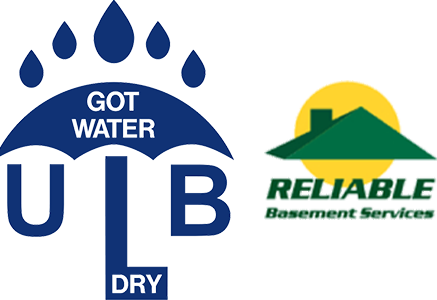This post was updated on 7/19/17 to reflect the latest available information.
Starting in the late 1950s, it became common practice to install a perimeter drain tile as part of the program to prevent foundation seepage and water from entering a home’s basement or crawl space. Whether the drain tile is installed along the interior or exterior perimeter of the foundation, all systems will eventually drain into a sump basin, complete with a sump pump design to discharge the water safely away from the structure and prevent foundation seepage. Ultimately, this prevents failure sump pump. Unfortunately, basement flooding and the area’s chilling winters continued to wreak havoc on sump pumps, resulting in the need for another visit from the local, Naperville waterproofing contractor. But, you can help prevent failure of the sump pump by following these tips.
Make Sure Your Basement Waterproofing Contractor in Chicago Places the Discharge Line Away From Your Home.
Originally, you could tie the discharge line into the common sewer. Following the housing boom, a concern arose that allowing all storm water to run into the main sewer could overwhelm the system. So, it became code in most villages and cities to discharge the storm water out to splash.
Splash simply refers to the premise of having the sump pump expel the water back into the yard, but for this to work, your Park Ridge waterproofing contractor must install the discharge line at least 4 to 6 feet away from the wall. This will get the discharge past the recycle zone, where the chances of it migrating back down to the drainage tile are greatly reduced.
Having a pipe sticking through the foundation wall brought about a whole new set of issues for the home owner, which include improper grading and the unsightly appearance of a pipe jutting through the wall. Improper grade causes water to pool in the yard, leading to areas where the force of the discharge erodes the soil.
There have been many different efforts made to rectify these issues and prevent failure of the sump pump.
- Burying the sump pump run-off underground is the most common. This is referred to as subsoil discharge. It is done by tying the discharge line coming out of the wall in to 4-inch line, which runs underground to an alternate point in the yard. For this to work effectively, the subsoil line must have the correct pitch to allow the water to drain. But, the most important part of a subsoil discharge is the termination point. In a perfect scenario, you would like a direct discharge at an inclined grade, however, this is rarely the case. More than 75% of the time the system terminates into a bubbler pot.
- Another way people try to prevent the sump pump discharge from flooding the yard is to install a length of flexible line above grade that they can then move the discharge from place to place as needed.
- In a limited number of cases, the homeowner of waterproofing contractor in Oak Brook simply attaches a length of solid line to the discharge just to extend it a little further out into the yard.
Remember the Impact of Winter on Sump Pumps.
Even with global warming, Chicago is not immune from winter’s chilling effects, such as heavy snowfall and freezing temperatures. Each of the sump pump discharge designs has its own set of circumstances, which may prove fatal to the sump pump, resulting in basement seepage and major damage if not discovered in time. Therefore, basement waterproofing in Chicago may require the following actions:
- A properly installed subsoil discharge, maximizing the effectiveness of basement waterproofing in Lombard, should have a freeze gap installed just outside the foundation wall, where the smaller line connects to the 4-inch piping. A freeze gap provides an open area for water from the sump pump discharge to spill out if the below-grade section of piping freezes. If your system lacks a freeze gap, a qualified, Chicago waterproofing contractor can install one for you.
- The termination point must be keep clear of snow, ice and other debris, which will prohibit the water from exiting the subsoil line. We suggest digging out both the termination point, as well as a small path or channel, for the water to drain. Also, put down a small amount of an ice melting material, they do make several, which are designed not to kill landscaping.
- If a length of flexible hose is used, no matter how level you think it is, it will have a series of peaks and valleys. Water accumulates in the ridges of the line and freezes. They only way to prevent this is to unhook the line and clear a path for the water to run away from the house.
- In the case of just a solid run of pipe, it is important that you check to make sure there is a proper pitch. Then, clear the area around the end of the line, creating a small channel for the water to flow away naturally. In the most severe of cases, wrapping the line with a low voltage heating element (similar to that of a gutter heater) will help control some of the freezing. However, this will require you to check the line frequently to insure no damage is being done. So, this should be only a last resort.
Let a Basement Waterproofing Contractor in Lombard Help.
The sump pump is the most integral part of any drain tile system. If the pump fails, the drain tile keeps directing water into the basin. With no pump to discharge it away from the house, it will flood your basement, causing untold damages. Fortunately, you can use these tips to extend the life expectancy of your sump pump. If you need help or are still uncertain as to how you can fix your discharge line, contact ULB-Dry Waterproofing online or by calling 1 (708) 978-7558 today.





